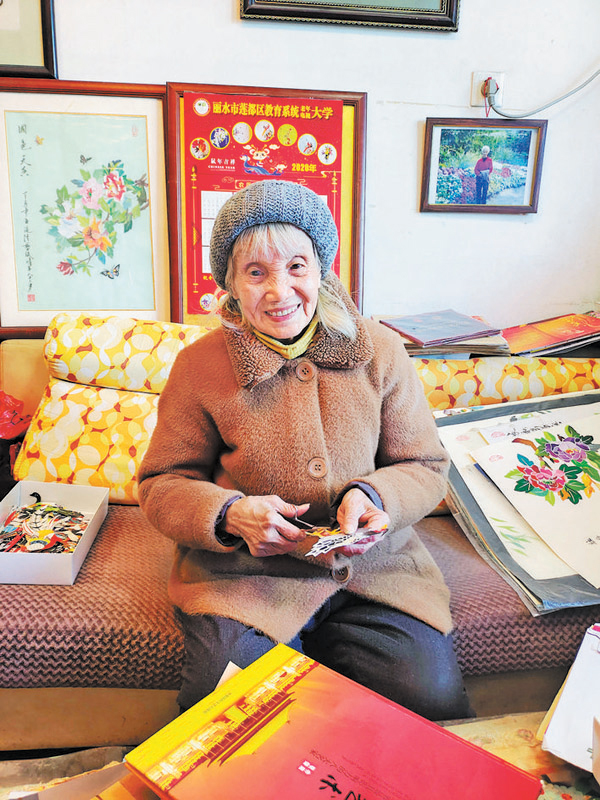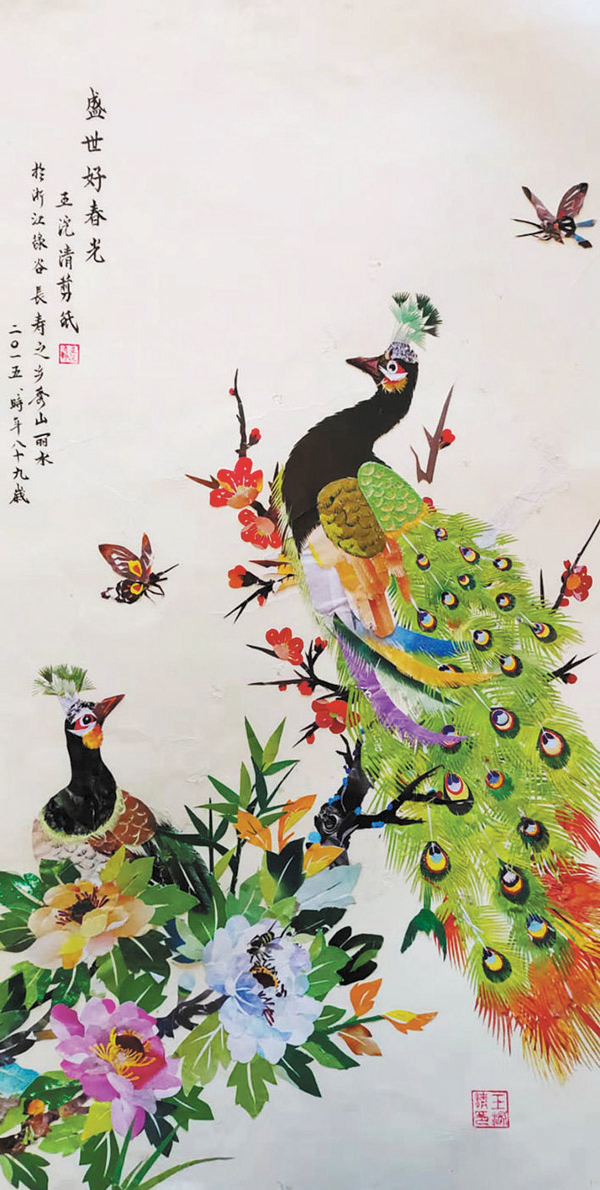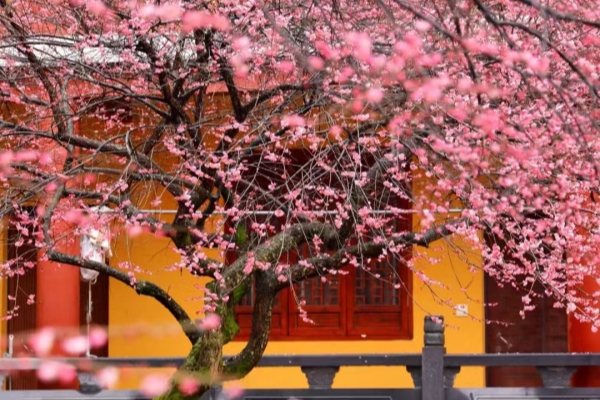Barbola handicraft depicts beauty of Lishui city

Wang Huanqing, now in her nineties, is devoted to the art of barbola. [Photo/lsnews.com.cn]
Wang Huanqing, a 95-year-old inheritor of barbola – a special kind of handicraft that is an intangible cultural heritage item in Lishui city, East China's Zhejiang province – decided to make a difference through the folk art form in 2003, 27 years after her retirement.
Barbola is a kind of art that is made by cutting and pasting together everyday waste items and rubbish, like old calendars and advertising paper.
In 2003, when Wang was sorting through old newspapers, she found a lot of advertisements. Looking at the colorful paper, which could only be sold for scrap, she had an idea: could they be put to better use?
So Wang then spent more than 10 hours a day, creating barbola from the wastepaper. She studied the paintings of birds and flowers from the Five Dynasties and Ten Kingdoms (907-960) and the Qing Dynasty (1644-1911) and managed to integrate Chinese painting with paper cutting, to form her unique flower and bird barbola creations.
Blessed with the unique natural resources of Lishui, Wang's barbola has strong local appeal and characteristics.

A vibrant barbola piece created by Wang Huanqing. [Photo/lsnews.com.cn]
Her work won the grand prize of the Hexie Cup national painting, calligraphy and photography competition for three consecutive years and she has been invited to exhibit in Japan, the United States, France and Thailand, among others.
In 2007, Wang's work Spring of Peace was displayed in Japan in an exhibition commemorating the 35th anniversary of the normalization of Sino-Japanese diplomatic relations.
However, after reaching the age of 86 in 2012, she stopped participating in competitions and avoided media interviews.
"I am in my nineties and now I treasure my time, so I want to put more energy into my work," Wang said. "I am worried that this craft will be lost," she added.
To date, Wang has passed her barbola skills onto more than 30 students.

 Lishui establishes intelligent biodiversity monitoring system
Lishui establishes intelligent biodiversity monitoring system New fungus species discovered in Qingyuan
New fungus species discovered in Qingyuan Lishui transforms weirs to aid fish migration
Lishui transforms weirs to aid fish migration